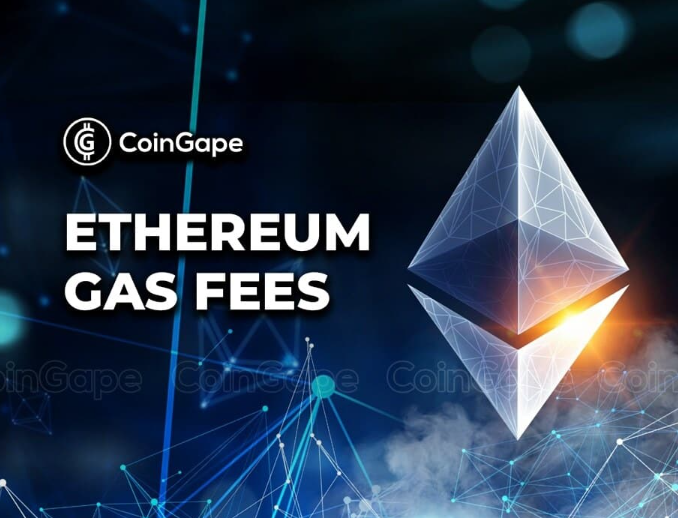bbc.towzdog.com – Ethereum Gas Fees Explained: Everything You Need to Know With the rise in popularity of Ethereum and its use in decentralized applications (dApps), Ethereum gas fees have become a crucial aspect for anyone interacting on the Ethereum blockchain. Whether you are buying NFTs, trading on DeFi platforms, or simply transferring ETH, gas fees impact every transaction. This guide breaks down what Ethereum gas fees are, why they fluctuate, and how to reduce your costs.
What Are Ethereum Gas Fees?
Ethereum gas fees are payments made by users to compensate for the computational energy required to process and validate transactions on the Ethereum blockchain. Every action on the blockchain, from simple transfers to complex smart contract executions, requires gas to be executed.
Why Do We Need Gas Fees?
Gas fees ensure that Ethereum’s network functions smoothly by providing incentives to miners, who are responsible for processing and verifying transactions. Without gas fees, there would be no reward structure for miners, making it challenging to maintain the network’s security and efficiency.
How Are Ethereum Gas Fees Calculated?
Ethereum gas fees are calculated based on two main factors:
- Gas Limit: The maximum amount of gas units the user is willing to spend on a transaction.
- Gas Price: The amount a user is willing to pay per unit of gas, usually denoted in Gwei (1 Gwei = 0.000000001 ETH).
The total gas fee is computed as:
Total Gas Fee = Gas Limit x Gas Price
The higher the gas price you set, the more likely your transaction will be prioritized by miners.
Factors Influencing Ethereum Gas Fees
Several elements affect Ethereum gas fees, including network congestion, transaction complexity, and the demand for block space. Let’s explore these in detail.
1. Network Congestion
High levels of activity on the Ethereum blockchain, often triggered by trending dApps, NFT drops, or DeFi platforms, can lead to higher gas fees as users compete to get their transactions processed. When the network is congested, miners prioritize transactions that offer higher gas prices, pushing up the fees for all users.
2. Transaction Complexity
Not all transactions on the Ethereum blockchain require the same amount of computational power. Complex transactions, such as interacting with smart contracts, require more gas than simple ETH transfers. As a result, transactions involving smart contracts in DeFi or NFT marketplaces tend to incur higher gas fees.
3. Block Space Demand
Each Ethereum block has a limited amount of computational space available. When demand for transactions exceeds this capacity, miners select the transactions offering the highest fees, which increases the cost for all users.
The EIP-1559 Update and Its Impact on Gas Fees
In August 2021, Ethereum implemented the EIP-1559 update, which introduced significant changes to the way gas fees are calculated and managed. Prior to EIP-1559, users had to bid gas prices, often resulting in high fees during peak periods. EIP-1559 introduced a Base Fee model, which stabilizes gas fees and enhances user predictability.
How EIP-1559 Works
- Base Fee: A standard fee for each transaction, dynamically adjusted based on network demand.
- Priority Fee: Users can add a small priority fee or “tip” to incentivize miners to process their transactions faster.
This update was designed to reduce gas fee volatility and make Ethereum more user-friendly. However, during high-demand periods, gas fees can still spike, especially for complex transactions.
How to Lower Ethereum Gas Fees
While it’s not always possible to avoid gas fees, there are strategies you can use to reduce your expenses on the Ethereum network. Here are some methods:
1. Choose Off-Peak Times
Gas fees are often lower during off-peak hours, when there is less congestion on the network. Tools like Ethereum Gas Tracker provide live gas fee information and can help you identify the best times for transactions.
2. Use Layer 2 Solutions
Layer 2 scaling solutions, such as Polygon and Optimism, enable faster transactions with lower fees. They process transactions off the main Ethereum chain, reducing congestion and costs for users.
3. Adjust Your Gas Limit and Gas Price
You can manually adjust the gas limit and gas price when making transactions, particularly if you are not in a hurry. Lower gas prices mean your transaction may take longer, but it can save money if speed is not a priority.
4. Consider Bundling Transactions
For users making multiple transactions, bundling them into a single batch can lower the gas fees compared to processing each transaction individually. Some decentralized finance platforms offer this feature to help users minimize costs.
5. Use Tools to Track Gas Fees
Using tracking tools like ETH Gas Station or Gas Now can provide you with live gas prices, helping you time your transactions to reduce costs.
Ethereum’s Transition to Proof of Stake and Future Gas Fees
One of the most anticipated upgrades on the Ethereum roadmap is Ethereum 2.0. By moving from Proof of Work (PoW) to Proof of Stake (PoS), Ethereum aims to improve scalability, energy efficiency, and ultimately lower gas fees.
How Will Ethereum 2.0 Affect Gas Fees?
In the current Proof of Work model, miners compete to validate transactions, leading to higher fees. With Proof of Stake, validators will replace miners, and the consensus mechanism will be more energy-efficient and capable of handling higher transaction volumes. This shift is expected to reduce congestion, potentially lowering gas fees.
Related Reading: For more on Ethereum 2.0, visit Ethereum.org.
Common Myths About Ethereum Gas Fees
As Ethereum gas fees are a widely discussed topic, several misconceptions can arise. Let’s address some of the most common myths.
Myth #1: High Gas Fees Are Permanent
Many users believe that high gas fees will always be an issue on Ethereum, but this is not necessarily true. Ethereum 2.0 and various Layer 2 solutions aim to address these challenges, potentially bringing down costs in the future.
Myth #2: Increasing the Gas Price Guarantees Faster Transactions
While offering a higher gas price can improve transaction speed, it’s not a guarantee. During periods of extreme congestion, even high-fee transactions may take longer than expected.
Myth #3: Gas Fees Are the Same Across All dApps
Each dApp and transaction type has unique gas requirements. For instance, transferring ETH incurs lower fees compared to transactions involving complex smart contracts in DeFi or NFTs.
Real-World Applications Affected by Ethereum Gas Fees
Ethereum gas fees impact various real-world applications, from finance to gaming. Here’s how some industries are affected.
1. Decentralized Finance (DeFi)
DeFi platforms like Uniswap, Aave, and Compound rely on Ethereum, and their users often face high gas fees for transactions like swaps, lending, or staking. These fees can reduce profitability for small transactions, making DeFi less accessible for new users.
2. Non-Fungible Tokens (NFTs)
NFTs, digital assets stored on the blockchain, are another sector affected by high gas fees. The process of minting, buying, or selling an NFT often involves high gas fees, which can deter users from participating, especially during periods of peak demand.
3. Gaming on Ethereum
Blockchain-based games like Axie Infinity and Decentraland depend on Ethereum for item ownership and transfers. High gas fees can limit user engagement, as small in-game transactions may become too costly during congested periods.
Frequently Asked Questions About Ethereum Gas Fees
What Is a Good Gas Fee?
A good gas fee depends on the network’s current congestion. You can monitor fees using tools like Etherscan’s Gas Tracker to get the best rates based on demand at that time.
Can Gas Fees Be Avoided?
No, gas fees are necessary for every transaction on Ethereum. However, you can minimize fees by using Layer 2 solutions, bundling transactions, or adjusting your gas price and limit.
How Much Do Gas Fees Cost on Average?
Gas fees vary significantly depending on network activity. On average, they can range from a few dollars to several hundred during high-traffic periods.
This guide provides a comprehensive overview of Ethereum gas fees, covering why they exist, how they’re calculated, and the best practices for managing your costs on the Ethereum blockchain. With the ongoing evolution of Ethereum and the growth of Layer 2 solutions, there are many ways to navigate gas fees and optimize your transactions on this leading blockchain platform.




